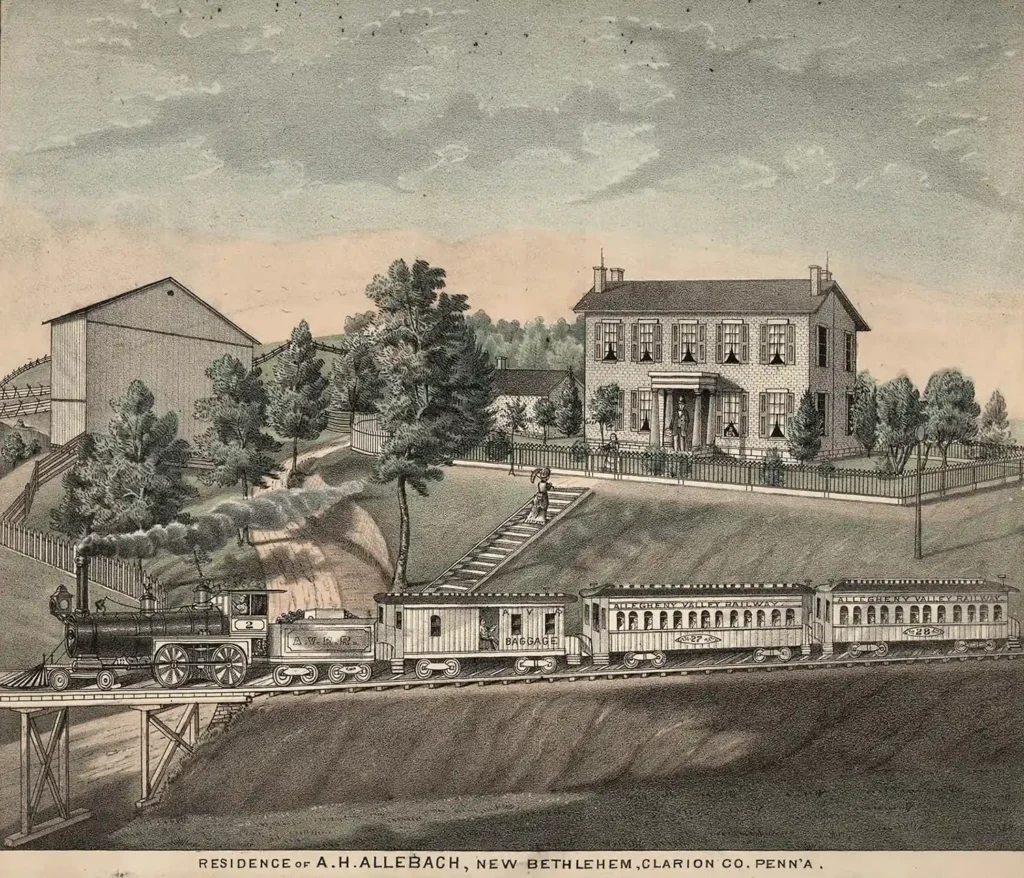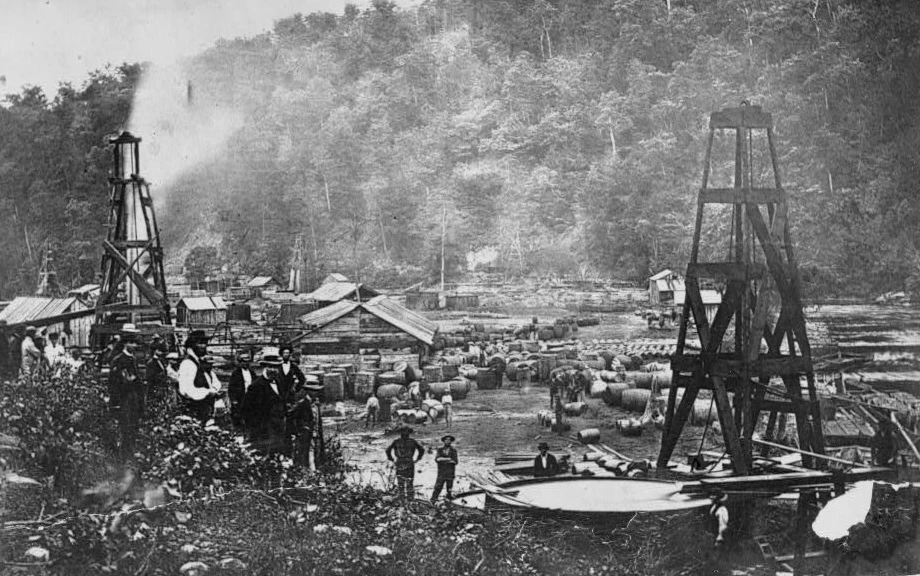Allegheny Valley Railroad: Extension to Mahoning; The Oil Region
The Daily Pittsburgh Gazette and Commercial Journal, March 21, 1863

The attention of the press and of the country has been so taken up with the subject of the war, and of public sentiment in reference to the war, that we have for a long time said very little on the subject of railroads, and of the great sources of wealth to which many of the roads centering in the city lead. In this latter particular none are more important than the Allegheny Valley Railroad, which connects us with the vast and varied wealth which nature has so lavishly stored in the extensive region drained by the river whose name it bears — chief among which are iron, oil and lumber.
Although only finished and in operation as far as Kittanning (45 miles), that road has been far more successful than many others of much greater length and larger pretensions. Its business has steadily increased, until at length its affairs are so prosperous that the company is able to push the road on to the next important point, the mouth of the Mahoning. This is one of the most important points on the Allegheny River, for it is here that roads from Clarion, Jefferson, Elk and other counties converge. These roads are generally pretty good, and are much travelled, while the road from this point down to Kittanning is so bad that it is but little used. The distance is only ten miles. This extension, therefore, will put this railroad in connection with all the leading roads of the extensive and rich region lying north of that point and east of the river.
This extension of ten miles brings the road to the place where the original survey leaves the river. Thence it follows the valley of the Mahoning a few miles, passing Stewardson Furnace; thence across to Redbank Creek at a place where these two important lumber streams approach within less than a mile of each other. From this last-named place, the main line continues up the Redbank far into Jefferson County, and thence northeast through Ridgeway to the state line, near Olean, New York. But what is now by far the more important extension from the place where the road reaches the Redbank, is the Clarion Branch, which, bearing northward, reaches the Clarion River at Callensburg, after passing some twenty miles through a beautiful agricultural country, and one of the richest iron regions in Western Pennsylvania. This branch runs exactly in the direction of Franklin and the oil region. From Clarion River to the mouth of Sandy Creek the distance is from 20 to 25 miles, through a good country, and, like the country south of the Clarion, rich in iron and coal. Sandy Creek is only a short distance down the river from Franklin.

This is the most natural and feasible route by which this city can be brought into railroad connection with the oil region, for it is already made and provided for to the mouth of Mahoning, which is at least three-fifths of the whole distance. But the greatest advantage is that it will at once accommodate the oil, the iron and the lumber business. Another advantage is the easy grade. On no part of the route will the grade be heavy, but so easy is the grade from the mouth of Mahoning to Pittsburgh, that a single locomotive will be able to transport a train carrying three thousand barrels of oil.
The extension of the road to Mahoning (only ten miles) will, it is estimated, add at least fifty percent to its business and revenue, while it will enhance its running expenses very slightly. But were it extended to the oil region, either by the route we have spoken of, or along the bank of the river, it would be one of the most useful and one of the best paying roads in the state. The route we have indicated, however, would be the best, whether utility, profit or distance is taken into view.
From Franklin there will soon be a railroad to Erie, so that this road, if extended to that place, will put this city into direct connection with Erie, and with the great system of railroads which run along the southern shore of Lake Erie.
